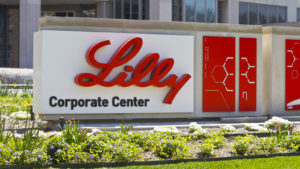The biotech sector is synonymous with innovation in a sense. The scientific advancement required to produce the next breakthrough therapeutic drug or device is inherently innovative.
There are multiple ways to understand innovation in biotech. Indeed, innovation goes beyond just developing breakthrough therapeutics and devices. Some of the exciting areas of innovation development in biotech include biosensors, bioplastics, gene editing, and artificial intelligence for drug development among others.
To be sure, biotech stocks are not an appropriate arena for every investor, particularly when you’re dealing with speculative names. Still, very few sectors offer the astounding profitability potential of biotech — though it can be terribly risky — people continue to flock to this market. Most of these names are less so.
Long story short, there’s a lot of innovation on the horizon, and thus, lots of opportunity to profit. Bearing that all in mind, let’s look at some biotech stocks with lots of potential in 2021.
- Takeda Pharmaceutical (NYSE:TAK)
- Schrodinger (NASDAQ:SDGR)
- Johnson & Johnson (NYSE:JNJ)
- Eli Lilly (NYSE:LLY)
- Horizon Therapeutics (NASDAQ:HZNP)
- Cerecor (NASDAQ:CERC)
- CRISPR Therapeutics (NASDAQ:CRSP)
Biotech Stocks: Takeda Pharmaceutical (TAK)

When you talk about innovation at a pharmaceutical company like Takeda often that means developing new ways to fight disease. At Takeda that translates to advancements in the field of immuno-oncology. Immuno-oncology is the area of medicine which deals with harnessing the body’s immune system in fighting off cancer.
At Takeda, within immuno-oncology efforts there is a specific focus on two areas. One area is turning tumors from “cold” to “hot.” This may seem counterintuitive at first blush. After all, turning something from cold to hot connotes the idea of activating it. And very few people would be interested in activating a tumor.
Actually though, a cold tumor is one which the body’s natural immune defenses are incapable of attacking. So, in this case, hot tumors are good since the body’s natural defenses can target them. Takeda is developing multiple approaches and methods of action in its immuno-oncology efforts.
Another focus area in immuno-oncology is the effort toward directing immune cells to target cancer cells. Much of the effort involves natural killer cells, T cells, and stem cells and methods to induce them to target cancerous cells in the body.
How quickly, or even if, these efforts bear fruit remains to be seen but Takeda’s innovation extends far beyond what I’ve mentioned. TAK stock is overweight, and looks like it has room to grow in any case.
Schrodinger (SDGR)

If Wall Street’s average target prices are indeed accurate, then Schrodinger stock has plenty of upside. Their average target price for SDGR stock is $89.25, 48% higher than its current $60.23 price.
Schrodinger is a company which provides chemical simulation software for the pharmaceutical industry. The utility of its software is helping pharmaceutical companies find effective drugs faster and cheaper. The idea then, is that pharmaceutical companies can reduce their significant R&D expenses. Theoretically this could mean lower drug prices for the end consumer.
Whether end consumers see reduced prices is somewhat irrelevant to Schrodinger’s share price. Ultimately, what matters is that Schrodinger can bring in revenue by selling its platform to interested pharmaceutical companies. Whether those companies pass on savings to the end consumers is another subject entirely.
Schrodinger’s first-quarter 2021 earnings report gives cause for optimism. Revenues hit $32.1 million, up 23% year-over-year. Revenues from software accounted for $26.3 million of that $32.1 total. Schrodinger also announced a collaboration with AstraZeneca (NASDAQ:AZN), which will leverage its platform.
Johnson & Johnson (JNJ)

There are a lot of reasons to like Johnson & Johnson. Perhaps it’s the fact that the company has been a household name for so long, the recent vaccine success of its pharmaceutical arm Janssen, or maybe even the fact that the company hasn’t reduced its dividend since 1982. Whatever it is, JNJ stock remains a solid choice in this sector.
Let’s switch gears here as it pertains to innovation. Generally innovation in biotech means cutting edge science. Johnson & Johnson certainly approaches innovation in that way as well. However, the New Jersey company also approaches innovation from the angle of access to medicine around the world.
Back in January, before its Covid-19 vaccine had received FDA go ahead, Johnson & Johnson pledged to allocate up to 500 million doses of its vaccine to lower income countries. Sometimes innovation manifests itself as equity in an often greedy world. Johnson & Johnson is also working to eradicate tuberculosis, and develop vaccines against ebola and HIV.
There’s plenty of upside in JNJ stock in 2021, and its 2.49% dividend yield will only sweeten the deal.
America’s #1 Stock Picker Reveals His #1 Stock For FREE
Yes, Luke really is #1 (he beat out 15,000 experts to claim that title… and the new pick really is free).
During this tell-all event, Luke pulls back the curtain on the secret technique that helped him earn the coveted title America’s #1 Stock Picker.
Tune in right now to see the event in its entirety. You can click here to view it.
Eli Lilly (LLY)

Let’s start by looking at financial results rather than innovation efforts for Eli Lilly. In Q1 2021 Eli Lilly’s revenues grew by 17%. That was, of course, a bright spot. However, net income decreased by 7%, and EPS dipped by a corresponding 7%.
LLY stock only briefly dipped on the April 27 news. It has since increased from a price of about $180 per share to $196. Wall Street believes there’s about another $20 of growth left which indeed makes this one to buy at the moment.
One of the reasons Eli Lilly is a biotech stock to buy in 2021 is its work in small activating RNA technology. Lilly is partnering with London-based MiNA Therapeutics to develop novel drug candidates. Eli Lilly will pay MiNA Therapeutics $25 million upfront for the London company to research up to five targets with its proprietary platform. Lilly will retain all commercial rights from those studies.
RNA therapeutics are a new class of medicine that can restore normal function to cells. Although Eli Lilly isn’t leading the innovation, per se, it will be the one to benefit financially from the proceeds out of this collaboration. And that’s what investors are really seeking from innovation.
Horizon Therapeutics (HZNP)

Horizon Therapeutics is a relatively small, fast-rising biopharmaceuticals company. The company focuses on orphan and rheumatology diseases, and inflammatory diseases. Horizon Therapeutics works to address rare autoimmune disorders and has seen success with its drug, Tapezza. Tapezza has found utility against the effects of thyroid eye disease which affects fewer than 100,000 people in the U.S.
Patients affected with the disease suffer bulging eyes which are at serious risk of progressing to blindness. Tapezza blocks the molecule which signals the progression of the disease.
The company anticipates sales of greater than $1.275 billion in 2021 and peak sales exceeding $3.5 billion. That would indeed be blockbuster status.
The company is in a period in which losses are mounting, yet sentiment is rising. Its Q1 2020 net loss of $13.59 million swelled to $123.351 in Q1 2021.
Like many biotech companies, Horizon Therapeutics’ losses are not scaring investors. HZNP stock is an almost-unanimous buy and has about a 20% growth forecast. Clearly its innovative, focused strategy is being well-received by the markets.
Cerecor (CERC)

Cerecor, unlike the other companies on this list, represents an emerging growth stock. Like Horizon Therapeutics, Cerecor is working to advance a pipeline to address unmet needs in rare diseases. Unlike HZNP, CERC stock is a penny stock and trades around $2.20 per share currently.
Its pipeline includes eight therapies, three of which are in Phase 2 clinical trials. The FDA recently granted fast track designation to Cerecor’s CERC-002. CERC-002 may be used in treating patients hospitalized with Covid-19. Fast track designation is designed to expedite development of treatments for which there is currently unmet need. Thus, CERC-002 is showing extraordinary promise.
CERC-002 is what is known as a LIGHT therapy. LIGHT is an acronym that stands for “homologous to Lymphotoxin, exhibits inducible expression and competes with HSV glycoprotein D for binding to herpesvirus entry mediator, a receptor expressed on T lymphocytes”. This means it may have utility in fighting against cytokine storm related issues presented by Covid-19.
The average analyst target indicates that CERC stock could triple to near $7, making it worth a serious look.
CRISPR Therapeutics (CRSP)

Crispr has been on many biotech investors’ radars for a few years now. The company has created revolutionary technology with its CRISPR/Cas9 platform. The technology allows scientists to edit the genome. That means it can be used to disrupt, delete, correct, and insert genomic information into the DNA of patients. The technology has applicability that is frankly so vast, that it’s difficult to comprehend.
The company’s pipeline includes 10 programs, five of which are in the clinical stage. The next step, should they receive FDA approval, is commercialization. The five programs in the clinical stage cover sickle cell disease and a related blood disorder, and several cancer variations.
It seems that CRISPR Therapeutics is bound to explode at some point. The issue is simply time to commercialization. Whether that happens in 2021 or not is up for debate. But it really seems like CRSP stock is simply a great buy-and-hold stock in a revolutionary company.
Editor's Note: “IMPERIUM:” The No. 1 Investment of the 2020s
Could this odd-looking machine really be the most transformative innovation in history?
Experts are screaming: “YES”!
Elon Musk calls it “amazing…”
A former Apple CEO says: “[It will] have a far bigger impact on humanity than the Internet.”
While a Harvard Ph.D. says it could “[surpass] the space, atomic, and electronic revolutions in its significance.”
It’s a technology I call “Imperium.”
And it’s about to spark the biggest investment mega trend in history… with one small Silicon Valley company at the center of it all.
To get all the details, click here now…










